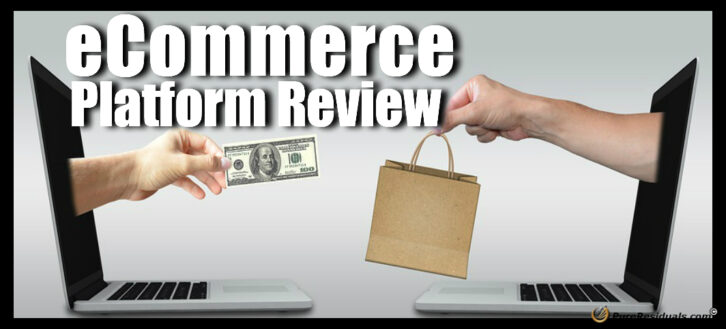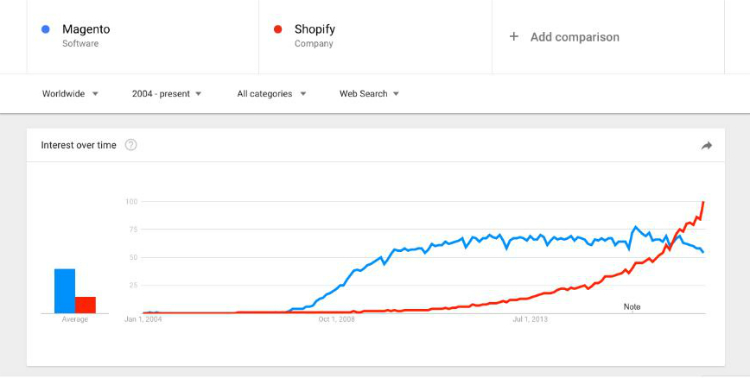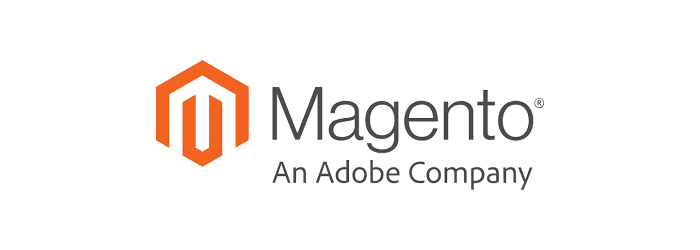eCommerce Platform Review
The mantra of previous generations of shopkeepers still rings true today: location, location, location.
Of course, contemporary commerce has expanded to include digital locations. Choosing the right spot for your eCommerce store is as important to “setting up shop” as it was in the days of only bricks-and-mortar. The eCommerce platform you choose will be the bedrock of your new (or expanding) enterprise, and should be chosen with a great deal of care.
The right eCommerce platform will impact all aspects of your online business from marketability to scalability, from setup cost to ease of use. Whilst transferring from one platform to another is possible, finding the appropriate arena from the word go will save you time and resources down the line. A move can have marked impact on your SEO efforts if not done carefully, and in many cases may land up undoing some of the good work you have already done.
With eCommerce worth set to rise to $4.5 trillion by 2021, the question is no longer whether you should find an eCommerce platform – it’s which one to choose. The big players are vying for top spot, but whilst there is serious competition for market share, these platforms are not necessarily always competing with each other when it comes to the specific needs of each enterprise. What one business will find suited to their purposes, another will deem unsuitable.
I’m going to guide you through the various options so that you can make an informed decision on which platform will best suit the needs of your business.
The big cheeses – eCommerce Platform Review
You’ve more than likely heard of the key players in the eCommerce game – Shopify, Magento, and WooCommerce. Each platform has its set of pros and cons, and the final decision rests on which platform caters to the capacity, technical knowhow, and objectives of your specific enterprise. Whatever your decision, you want to make it as efficiently as possible so that you can move on to the work of setting up and optimising your store.
So without further ado, let’s have a look at the points that matter:
- EASE OF USE: How much technological brain power do you have at your disposal? How much time do you want to spend on the backend of your site? Match your platform choice to your team’s skill set and availability.
- PRICING: This is more complex than a simple price tag. Understand what hidden costs may be involved in each option. The upfront cost may only be the shiny veneer.
- SEO: You want to know if your site can be found on search engines. Simple as that. As John Rampton outlines for Forbes, “SEO will continue to play a critical role” when it comes to eCommerce marketing. Don’t set up shop in the digital desert.
- MOBILE: You want to know if your store is optimised for the ways in which people are searching — and everything is pointing to mobile. Mobile commerce hit $700 billion in revenue in 2017. It’s imperative that you understand this impact when choosing a platform for your store.
- INTEGRATIONS AND PLUGINS: Whether you need specific plugins for the type of business you have, are looking for integrations that will allow you to do business in a more seamless way, or are on the hunt for the best payment processing options, make sure that your platform is able to accommodate the add-ons you desire.
- SCALABILITY: Think about this now. Your future self will be thankful.
- CUSTOMER SERVICE: How alone you want to be in the wilderness is up to you.
Ready? Let’s dive into a comparison between Shopify, Magento, and WooCommerce.
Shopify
Summarized in a few words: simple-to-use, SEO-friendly, very popular, and an abundant selection of themes.
Ease of use:
In June of 2016, Shopify surpassed Magento in terms of popularity. This is what the picture looked like, if you’re curious.
Source: FuelMade
At the heart of this surge forward is how simple Shopify is to use. Setup is easy, SEO is easy, running your store is easy. You don’t need coding knowledge to be a digital entrepreneur. Shopify is a hosted platform, meaning little of the site uptime or maintenance is in the hands of the store owner. This means you can focus on product design and creation, rather than the technical nuts and bolts.
If you were exclusively a bricks-and-mortar store, would you want to be troubling yourself with the actual infrastructure and how it comes together to form a sturdy building? With Shopify, you don’t have to concern yourself with this. You focus on the products and marketing.
As PJ Germain outlines in this guide, Shopify allows you to have a store up-and-running in no time. Shopify comes with a vast array of eCommerce shop templates, meaning you can create a professional looking site with minimal hassle.
Pricing:
- Shopify Lite: $9 a month (Please note, you cannot build a store with this version.)
- Basic Shopify: $29 a month
- Shopify: $79 a month
- Advanced Shopify: $79
You receive a discount of 10% per month for a 1-year membership, and 20% per month for a 2-year membership. Here is a complete breakdown of Shopify pricing. It’s important to understand that there might be further costs involved, depending on whether you want to spend money on your theme, and what plugins or integrations you choose.
Having said that, you will save big money in both the short and long terms as you won’t have to fork-out for a web developer (or spend hours trying to do it yourself, if you’re so inclined.)
SEO:
Through the help of third-party apps, you can quickly work towards getting your store found. They also provide resources to help you do it.
Mobile compatibility:
In 2014, Shopify launched Shopify Mobile to make it easy to manage your store from your smartphone. From a customer perspective, Shopify themes are mobile-friendly (responsive).
Integrations and plugins:
Shopify is not lacking when it comes to integrations and plugins, and its list of add-on services seems to increase by the minute. It’s noteworthy that Shopify is compatible with numerous payment gateways, in the form of both PayPal and payment cards. The Shopify app store is a treasure trove of useful plugins.
Scalability:
This is why Shopify Plus exists. Your business has the potential to grow. Here are some handy tips on how to scale your Shopify store. Print-on-demand (POD) is one of the ways to increase revenue. I started Kite.ly as soon as I realised the magnitude of possibilities for replacing the outdated manufacturing, supply, and delivery pipeline. You can grow your business sustainably whilst improving convenience for all involved.
Something worth mentioning in terms of scalability – it’s hard to relocate a Shopify store to another platform. This should be a long-term relationship, not a fling.
Customer service:
You’ll get it from the Shopify Experts. This is not just customer service. It’s a dedicated and active community.
Magento
In a few words: self-hosted, powerful, enterprise solution with complex features
Ease of use:
Short answer – it’s not easy unless you’re a high-level tech fundi. Magento is a self-hosted platform, which is both positive and negative. It puts the onus on you to create and maintain the site but also makes your site entirely customizable – provided you have the knowhow.
It is a robust platform that is well-suited to large-scale enterprises. It’s worth looking into if you have the capacity to deal with the site setup and ongoing maintenance.
Pricing:
Because much of what you accomplish with your site is in your hands, Magento pricing varies widely. Whilst Magento Community Edition is free, it comes without support and it will only be useful to you if you have a very specific plan of what to do with it.
The Enterprise Packages are far from free. Low-end is approximately $3000, reaching $50000 on the higher end. It’s easy to see why it is more suited to larger scale operations. It’s important to factor in developer costs, not to mention the bill that may come your way with add-ons.
SEO:
Magento comes with powerful SEO options in the form of add-ons. The best ones come at a price, but the alternative of not being found… Those add-ons are worth every penny.
Mobile compatibility:
Your Magento site can be fully compatible with your customers’ mobile search habits, provided you are willing to make it happen yourself. Magento Marketplace includes some add-ons that will assist you in getting your site on-the-move.
Integrations and plugins:
Magento comes equipped with the option for a vast array of integrations and plugins. Perhaps most notably, Magento has many offline and online payment processing options available. Added to this, their Marketplace is comprehensive. All these add-ons are available, provided you know how to put all the puzzle pieces together yourself.
Scalability:
Magento 2.0 was created with scalability as one of its chief mandates. The platform is scalable at the enterprise level but once again, you need to have the know how to make it happen.
Customer service:
Support exists but only with the Enterprise packages. You get support if you pay for it.
WooCommerce
In a few words: The trusty eCommerce partner for WordPress
Ease of use:
If you know how to use WordPress, you’ll know how to use WooCommerce. Essentially, WooCommerce allows you to monetise your WordPress site. If you already have a WordPress site that you are looking to push in the direction of eCommerce, this is a good option. Whilst it is easy to use, it does take time to get your site up-and-running. If your launch is time-sensitive, this may not be the best option. There are numerous themes for you to choose from, both free and paid for, which allow you to customise your site with the usual WordPress tools.
Pricing:
Here’s the fun part – WooCommerce is free. However, free is rarely totally free. You may have developer costs, as well as the hidden dollars lurking in add-ons and integrations.
SEO:
When it comes to marketing your site, you are left to rely on the plugins that WordPress has to offer. Luckily, there are plenty on offer for free and paid. There is a lot of information out there to help with WordPress SEO.
Mobile compatibility:
Most WordPress and WooCommerce themes are responsive, meaning that the customer will experience a solid mobile-friendly interface. Your developer may need to conduct a few tweaks however, as sometimes this is less than perfect.
Integrations and plugins:
WooCommerce has outstanding financial integrations that will allow you to streamline your payment process. Other add-ons allow you to scale up and scale down, increase functionality of your site and choose layout and design. Again, the more familiar you are with WordPress, the easier these will be to integrate. Some knowledge of basic code is highly advantageous.
Scalability:
Because they have prioritised outstanding payment services, a WooCommerce site is easily scalable. The platform is suitable for enterprises of various sizes.
Customer service:
Customer service is available through live chat and support forums. There are also plugins that deal exclusively with customer support for your own customers.
In summary…
Choosing the eCommerce store that suits your needs is difficult and can only be done once you have defined exactly what those needs are.
So, here’s my cheat sheet:
- Are you a large-scale enterprise with a lot of money looking for a robust solution that, while powerful, has a very steep learning curve and requires technical knowhow? If so, you might wish to go with Magento.
- Do you already have a WordPress site that you would like to monetize? If so, you might wish to go with WooCommerce.
- Are you looking to set up shop as quickly as possible on a reliable, scalable, and hosted platform? If so, go with Shopify. It’ll allow you to spend your time on the fun parts of your business, without worrying about store infrastructure.
Remember those words: location, location, location. Good luck with finding yours!
Author Bio
Charlie Carpenter is the co-founder and CEO of Kite. He is a mobile advocate with over ten years of industry experience.
After working for large and small agencies for many years, he co-founded Kite; a software solution for print-on-demand, zero inventory merchandise, and personalized photo print goods. As well as an entrepreneur, Charlie is a seasoned product strategist with experience of various types of digital projects which include: Responsive and Adaptive Websites, Mobile & Tablet Apps, Hybrid Apps, Cross Platform App development.
You can connect with Charlie on LinkedIn, and follow him on Twitter.












informative blog! I have a store but planning to move to a new platform, I’m considering among 3 popular platforms which are Shopify, WooCommerce and Magento. I ran a free demo of an automated tool called LitExtension to preview how my data stored and managed on each platform test store backend. Therefore, I chose Shopify because of its scalability and reliability. For anyone who are still considering to move to a new platform, you can use test store feature provided by the above-mentioned tool to preview how they work.
Excellent! Thanks for the info, Alison.